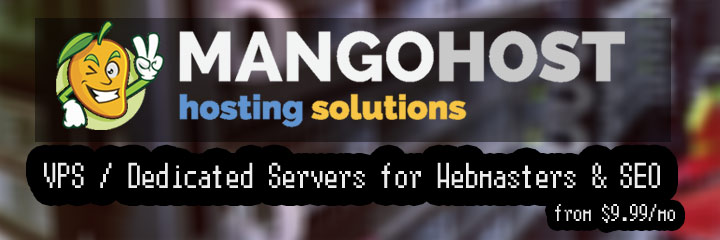
 Get the solution ↓↓↓
Get the solution ↓↓↓
I am using this documentation: https://api.challonge.com/v1/documents/participants/bulk_add
I have figured out to how leverage bulk add by using a multiline textarea, however I cannot figure out have to also add additional information besides just the names. For example, I want to also add miscellaneous information as well.
This works, but I cannot determine how to also gather the additional information:
<form action="bulkadd.php" method="post">
<textarea id='name' name='name' rows='64' cols='25'></textarea>
</form>
<input type="submit" value="Submit">
<input type="reset" value="Reset">
I'd like my resulting array to be:
{"participants": [
{"name": "John Doe", "misc": null},
{"name": "Jane Doe", "misc": "*"},
{"name": "Jenn Doe", "misc": "*"}]
}
I attempted to add a checkbox to set the "misc" as follows:<input type="checkbox" name="sidepot" id="misc" value="*">, but I couldn't figure out how to synch that up to the correct "name". Any ideas on how to accomplish this?
To relate fields within a form you can use the[] syntax on the elements names - multiple elements of the same name with the square braces in the names act like arrays and have an index. If the other fields also have the square braces the same index can be used to link, say,name[1] andmisc[1] etc
Some very simple Javascript can be used to clone the relevant HTML so that when the form is actually submitted the fields within each section are relatable to one another. The snippet at the bottom shows the cloning process in action. Note: I usedusername here rather thanname for the input element but that was an oversight on my part.
For instance:
<!DOCTYPE html>
<html lang='en'>
<head>
<meta charset='utf-8' />
<title>Challonge</title>
<style>
body,body *{box-sizing:border-box;font-family:verdana;}
form{display:block;width:40%;padding:1rem;border:1px solid black;margin:auto;float:left;background:whitesmoke;clear:both;}
section{margin:1rem auto;padding:0.25rem;border:1px dotted gray;background:white;}
label{display:block;margin:0.25rem auto;padding:0.25rem;}
label > input{float:right;padding:0.25rem;}
label:before{content:attr(for);text-transform:capitalize}
[type='submit'],
[type='reset'],
[name='add']{padding:0.5rem;height:3rem}
input[name='add']{font-weight:bold;float:right}
pre{display:block;margin:2rem auto;float:left;clear:both; width:40%;font-size:smaller;}
</style>
</head>
<body>
<form name='challonge' method='post'>
<section>
<label for='username'><input type='text' name='username[]' value='john doe' /></label>
<label for='misc'><input type='text' name='misc[]' value='abc-1' /></label>
</section>
<div>
<input type='submit' />
<input type='reset' />
<input type='button' name='add' value='+' />
</div>
</form>
<script>
document.querySelector('input[name="add"]').addEventListener('click',e=>{
let form=document.forms.challonge;
form.insertBefore( form.querySelector('section').cloneNode( true ), form.querySelector('div') );
});
</script>
<?php
/*
The following PHP emulates what you would put within bulkadd.php
before sending the json data to the challonge api. In effect this
is acting as the form target here for demo.
*/
if( $_SERVER['REQUEST_METHOD']=='POST' && !empty( $_POST['username'] ) ){
// to show raw post data is related by index
printf('<pre>%s</pre>',print_r( $_POST, true ) );
// process the POST data to form desired output
$data=array();
foreach( $_POST['username'] as $index => $name ){
$data[]=array(
'name' => $name,
'misc' => $_POST['misc'][$index]
);
}
$json=json_encode( array( 'participants'=>$data ) );
// to show processed json data
printf('<pre>%s</pre>',print_r( $json, true ) );
}
?>
</body>
</html>
The above yields the following output:
Array
(
[username] => Array
(
[0] => john doe
[1] => jane doe
[2] => jenn doe
)
[misc] => Array
(
[0] => abc-1
[1] => abc-2
[2] => abc-3
)
)
{
"participants":[
{"name":"john doe","misc":"abc-1"},
{"name":"jane doe","misc":"abc-2"},
{"name":"jenn doe","misc":"abc-3"}
]
}
/*
Clone the portion of the form that contains the fields we wish to
include in the final json data. No element should have an ID assigned
unless other steps are taken to account for and prevent duplicate IDs.
*/
document.querySelector('input[name="add"]').addEventListener('click',e=>{
let form=document.forms.challonge;
form.insertBefore( form.querySelector('section').cloneNode( true ), form.querySelector('div') );
});body,body *{box-sizing:border-box;font-family:verdana;}
form{display:block;width:80%;padding:1rem;border:1px solid black;margin:auto;float:left;background:whitesmoke;clear:both;}
section{margin:1rem auto;padding:0.25rem;border:1px dotted gray;background:white;}
label{display:block;margin:0.25rem auto;padding:0.25rem;}
label > input{float:right;padding:0.25rem;}
label:before{content:attr(for);text-transform:capitalize}
[type='submit'],
[type='reset'],
[name='add']{padding:0.5rem;height:3rem}
input[name='add']{font-weight:bold;float:right}
pre{display:block;margin:2rem auto;float:left;clear:both; width:80%;font-size:smaller;}<form name='challonge' method='post'>
<section>
<label for='username'><input type='text' name='username[]' value='john doe' /></label>
<label for='misc'><input type='text' name='misc[]' value='abc-1' /></label>
</section>
<div>
<input type='submit' />
<input type='reset' />
<input type='button' name='add' value='+' />
</div>
</form>Our community is visited by hundreds of web development professionals every day. Ask your question and get a quick answer for free.
Find the answer in similar questions on our website.
Do you know the answer to this question? Write a quick response to it. With your help, we will make our community stronger.
PHP (from the English Hypertext Preprocessor - hypertext preprocessor) is a scripting programming language for developing web applications. Supported by most hosting providers, it is one of the most popular tools for creating dynamic websites.
The PHP scripting language has gained wide popularity due to its processing speed, simplicity, cross-platform, functionality and distribution of source codes under its own license.
https://www.php.net/
JavaScript is a multi-paradigm language that supports event-driven, functional, and mandatory (including object-oriented and prototype-based) programming types. Originally JavaScript was only used on the client side. JavaScript is now still used as a server-side programming language. To summarize, we can say that JavaScript is the language of the Internet.
https://www.javascript.com/
CSS (Cascading Style Sheets) is a formal language for describing the appearance of a document written using a markup language.
It is mainly used as a means of describing, decorating the appearance of web pages written using HTML and XHTML markup languages, but can also be applied to any XML documents, such as SVG or XUL.
https://www.w3.org/TR/CSS/#css
HTML (English "hyper text markup language" - hypertext markup language) is a special markup language that is used to create sites on the Internet.
Browsers understand html perfectly and can interpret it in an understandable way. In general, any page on the site is html-code, which the browser translates into a user-friendly form. By the way, the code of any page is available to everyone.
https://www.w3.org/html/

Welcome to the Q&A site for web developers. Here you can ask a question about the problem you are facing and get answers from other experts. We have created a user-friendly interface so that you can quickly and free of charge ask a question about a web programming problem. We also invite other experts to join our community and help other members who ask questions. In addition, you can use our search for questions with a solution.
Ask about the real problem you are facing. Describe in detail what you are doing and what you want to achieve.
Our goal is to create a strong community in which everyone will support each other. If you find a question and know the answer to it, help others with your knowledge.